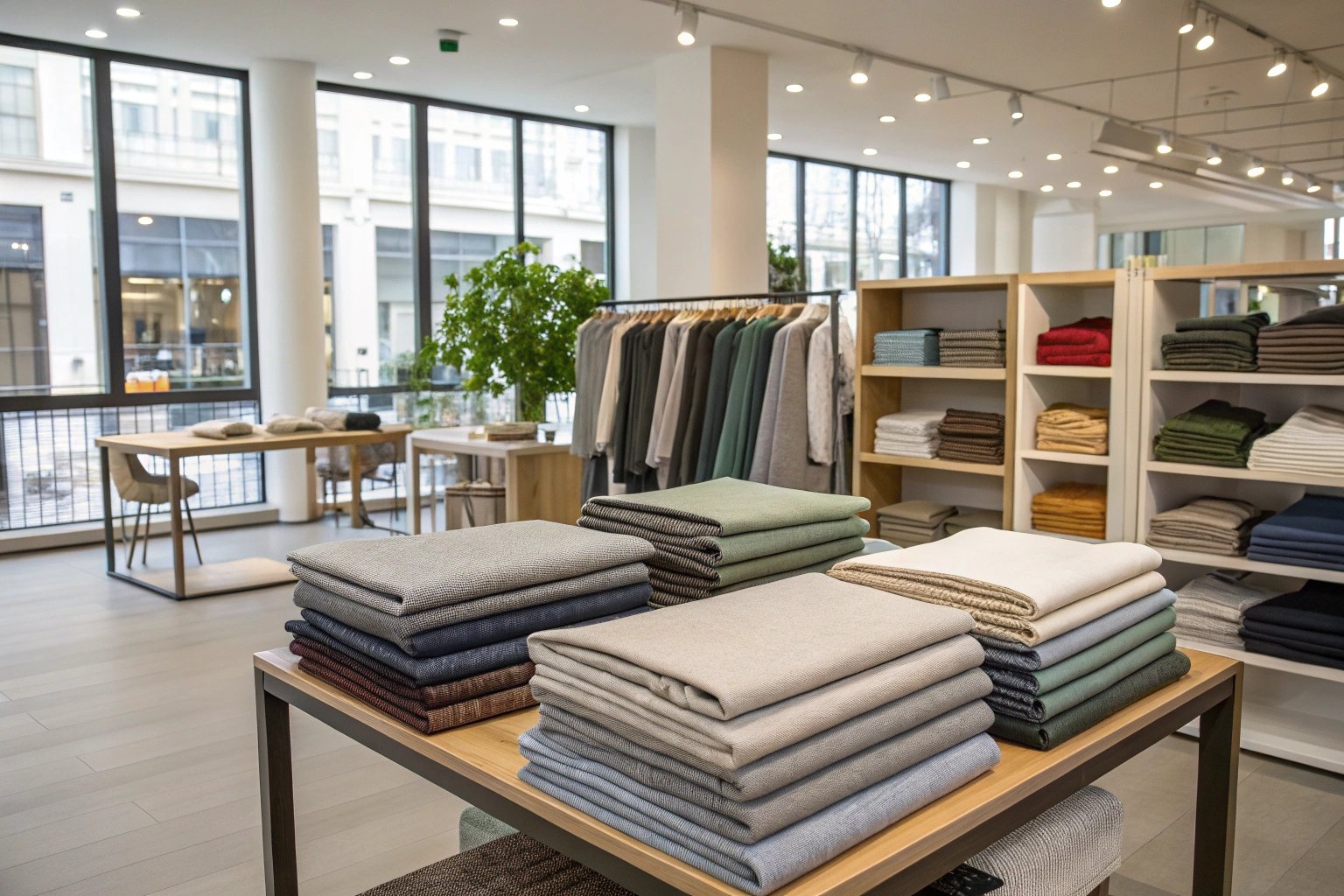As sustainability shifts from trend to expectation, more fashion and textile brands are under pressure to prove their environmental credentials. Recycled polyester (rPET), made from post-consumer PET bottles, has become one of the most in-demand sustainable materials. But sourcing it isn’t as simple as choosing any supplier that claims “eco.” If you want credibility and traceability, you need Global Recycled Standard (GRS) certification.
The best places to source GRS-certified recycled polyester fabrics are certified manufacturers in China, India, and Southeast Asia that provide traceable supply chains, testing support, and flexible MOQ for fashion, sportswear, and home textiles.
As a fabric manufacturer and exporter with full GRS certification, I’ve helped buyers worldwide secure sustainable polyester solutions that meet both quality and compliance demands. Here’s how you can find the right supplier—and avoid greenwashing.
What Is GRS Certification and Why Does It Matter?
The Global Recycled Standard (GRS) is an internationally recognized certification issued by Textile Exchange, ensuring the content, traceability, social responsibility, and chemical use of recycled materials.
GRS certification guarantees that recycled polyester is not only real, but that it follows strict environmental, ethical, and traceable supply chain standards.
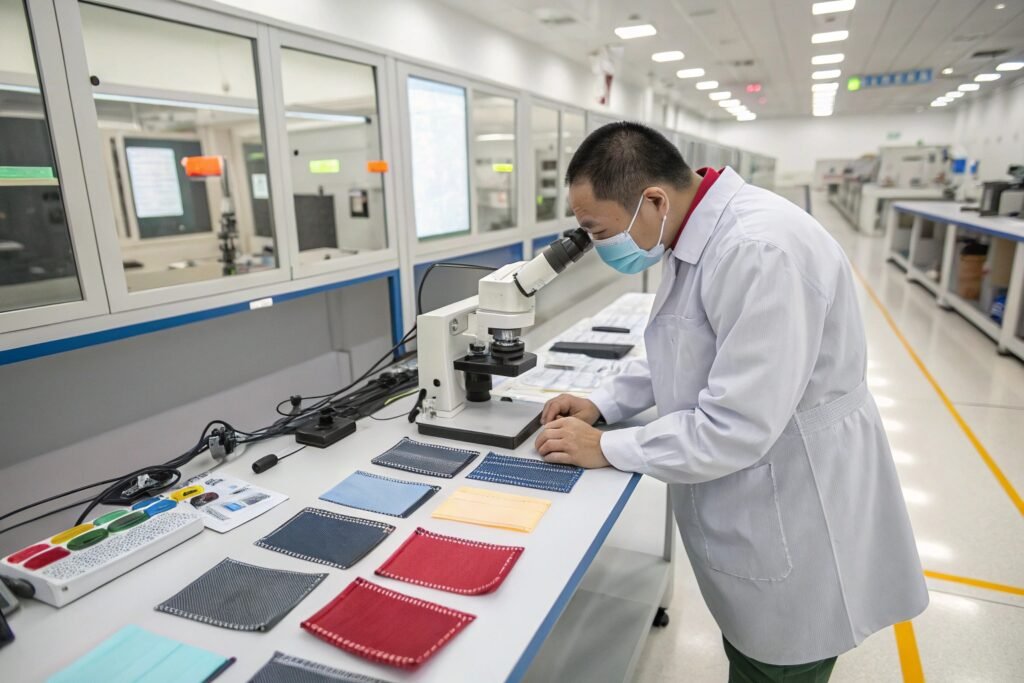
What Does GRS Certification Cover?
- Recycled content verification
- Environmental practices (wastewater, emissions)
- Social compliance (worker conditions)
- Restricted Substance List (RSL) adherence
- Chain-of-Custody traceability
At Fumao Fabric, we operate under full GRS scope certification—from bottle flake sourcing to final fabric rolls—allowing our clients to label their garments as GRS-certified for consumer trust.
Why Is GRS Better Than “Recycled” Claims Alone?
Many suppliers claim to use recycled materials, but without certification, there’s no proof. GRS ensures:
- Verified recycled content percentage (e.g., 100%, 85%)
- Third-party audits by bodies like Control Union or Intertek
- Use of non-toxic dyes and finishing chemicals
- Full transaction certificates (TCs) for every lot
You can verify GRS listings through the Textile Exchange database to check if your supplier is genuinely certified.
Where Are the Best Global Suppliers of GRS-Certified rPET?
Most of the world’s GRS-certified recycled polyester fabrics are produced in Asia, with China being the largest hub for both virgin and recycled PET textiles.
China, India, and Southeast Asia lead the global supply of GRS-certified recycled polyester fabrics, offering scalable production, fast turnaround, and varied fabric types.
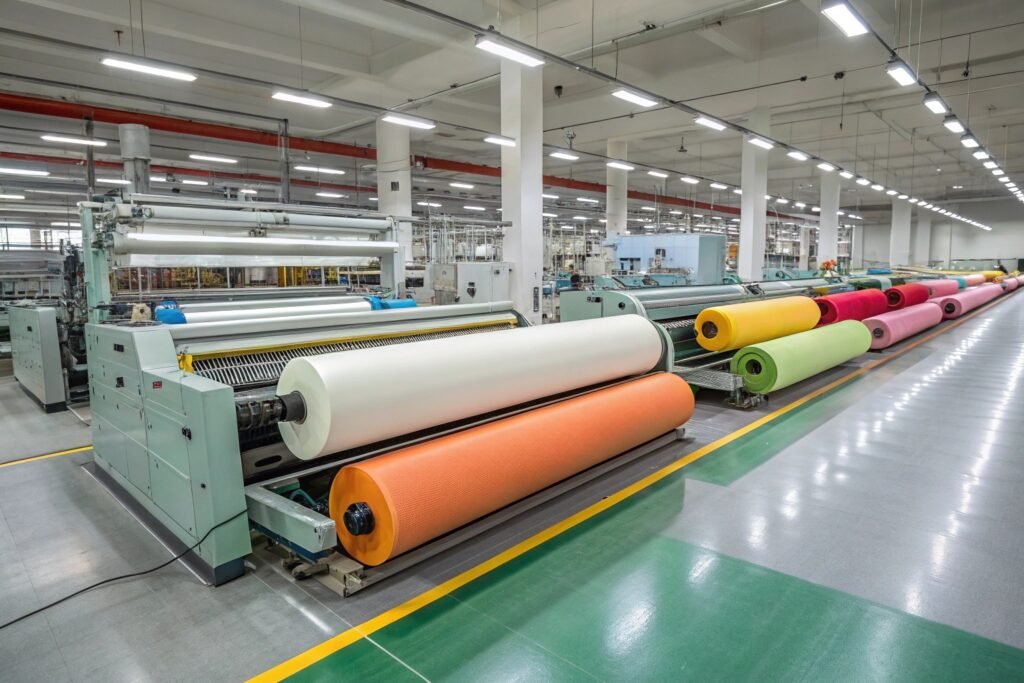
What Makes China a Prime Sourcing Location?
In Keqiao, Zhejiang, where our factory is located, more than 500 GRS-certified facilities operate along the supply chain—from recycled chip production to yarn extrusion and fabric finishing.
Advantages include:
- Wide range of fabric types (knit, woven, stretch)
- Access to both mechanical and chemical recycling
- Shorter lead times (10–15 days for repeat orders)
- In-stock GRS yarns from partners like Hengli and SINOPEC
We offer MOQ as low as 300 meters and custom dyeing with bluesign®-approved and ZDHC-compliant auxiliaries.
What About India and Southeast Asia?
India and Bangladesh are known for their GRS-certified circular knit fabrics and yarn dyeing capacity, often used in T-shirts, leggings, and casualwear.
Vietnam and Indonesia are growing sources for athleisure and technical fabrics, especially for brands requiring US/EU-compliant TCs and duty-free trade routes (via RCEP).
We work closely with partner mills in India for pigment-printed rPET jersey and in Vietnam for warp-knit meshes used in performance outerwear.
What Kinds of Fabrics Are Available in GRS-Certified rPET?
Recycled polyester doesn’t mean limited variety. Thanks to advanced spinning and knitting technology, GRS-certified yarns are now used across almost every textile application.
GRS-certified recycled polyester is available in knits, wovens, prints, stretch blends, and coated fabrics—serving fashion, activewear, outdoor, and home textile markets.
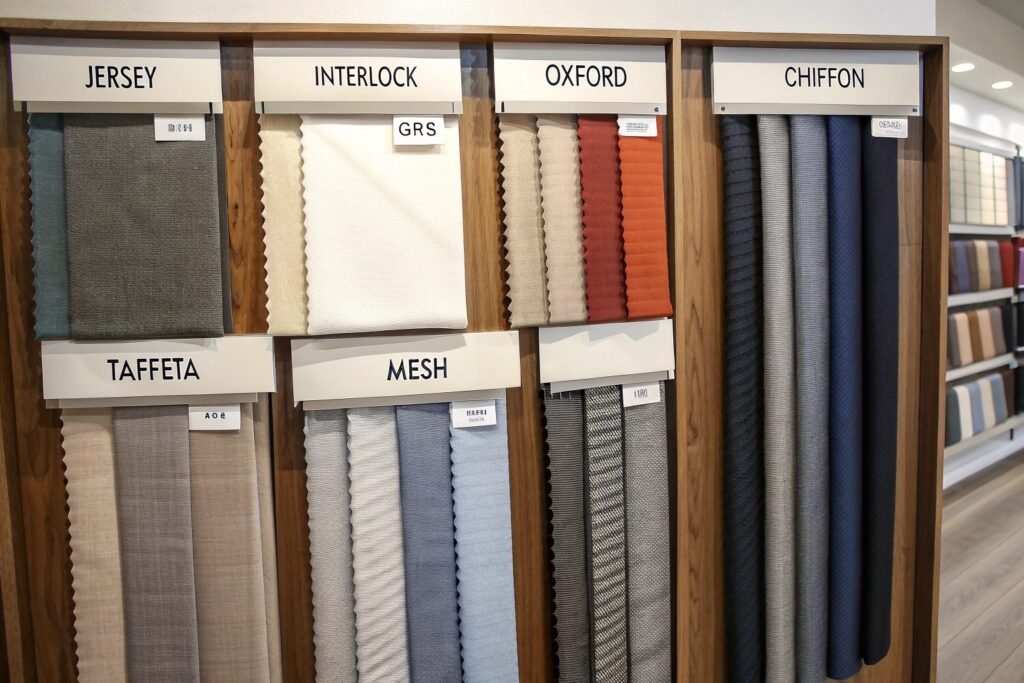
Most Popular Fabric Types
| Fabric Type | Typical GSM | Use Case |
|---|---|---|
| Jersey Knit | 120–180 | T-shirts, dresses, base layers |
| Mesh/Tricot | 80–160 | Sportswear, lining, activewear |
| Oxford/Taffeta | 100–210 | Bags, outerwear, uniforms |
| Chiffon/Georgette | 60–100 | Fashion blouses, scarves |
| Twill/Canvas | 180–300 | Pants, jackets, home textiles |
We offer over 500 stock rPET styles, including sublimation-ready, UV-protective, anti-bacterial, and moisture-wicking finishes—all traceable via QR-coded GRS documentation.
Can rPET Be Blended?
Yes. Many buyers prefer rPET-spandex or rPET-cotton blends for stretch, drape, or natural feel. These can still be GRS-certified as long as the recycled content is accurately documented and verified.
Ask for blends like:
- 85% rPET / 15% Spandex – yoga wear
- 50% rPET / 50% Organic Cotton – eco casualwear
What Should You Ask Before Buying GRS Fabrics?
Not all suppliers offering “recycled” polyester meet global certification standards. Here’s how to vet a GRS source properly.
Ask for GRS scope certificates, transaction certificates, yarn lot traceability, and third-party lab test reports to ensure authenticity.
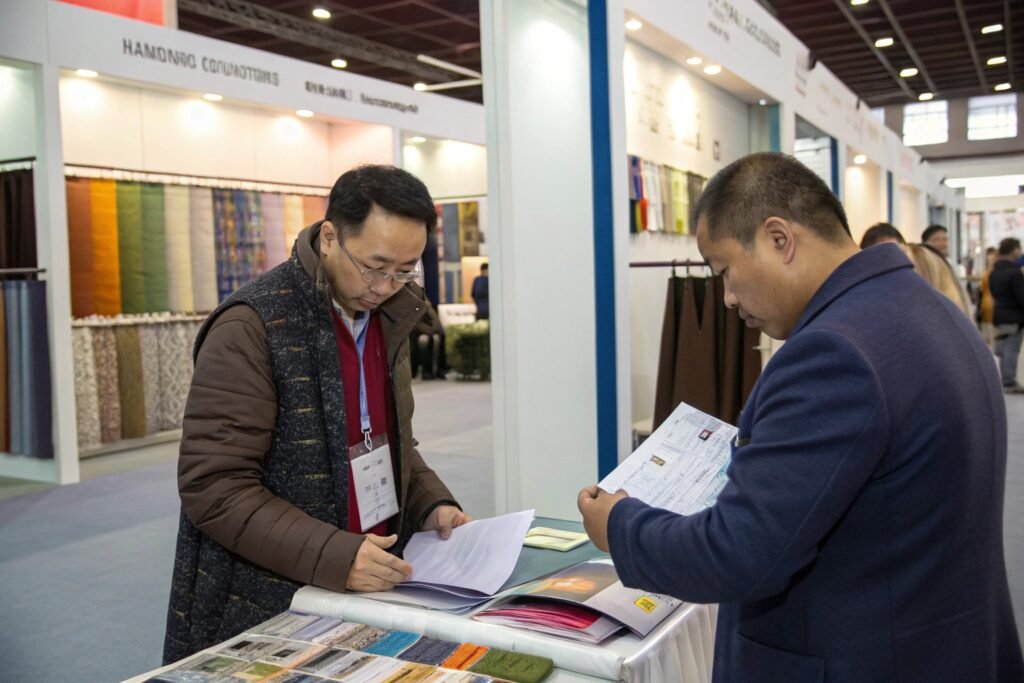
Checklist Before Ordering:
- GRS Scope Certificate: Check factory name, cert number, expiration
- Transaction Certificate (TC): Must be issued per lot
- Composition Declaration: % of rPET content (min 20% for GRS)
- Fabric Specs: GSM, stretch, colorfastness, shrinkage
- Audit Compliance: OEKO-TEX®, ZDHC, BSCI, etc.
We provide all five for every rPET order, including QR-traceable tags, SGS testing, and optional video-based roll inspection before shipment.
Can You Request Custom Designs?
Yes. Many of our clients co-develop new designs using:
- Digital prints on rPET chiffon
- Jacquard textures on rPET interlock
- Coated fabrics for rPET outdoor use
We deliver first samples in 3–5 days and bulk within 10–14 days depending on quantity.
How to Build Sustainable Sourcing with rPET Fabrics?
Recycled polyester isn’t just a material—it’s a message. For fashion brands, using certified rPET fabrics is a tangible step toward circularity and transparency.
To build long-term value, integrate rPET fabrics into your supply chain with verified partners, consistent TCs, and branded sustainability communication.
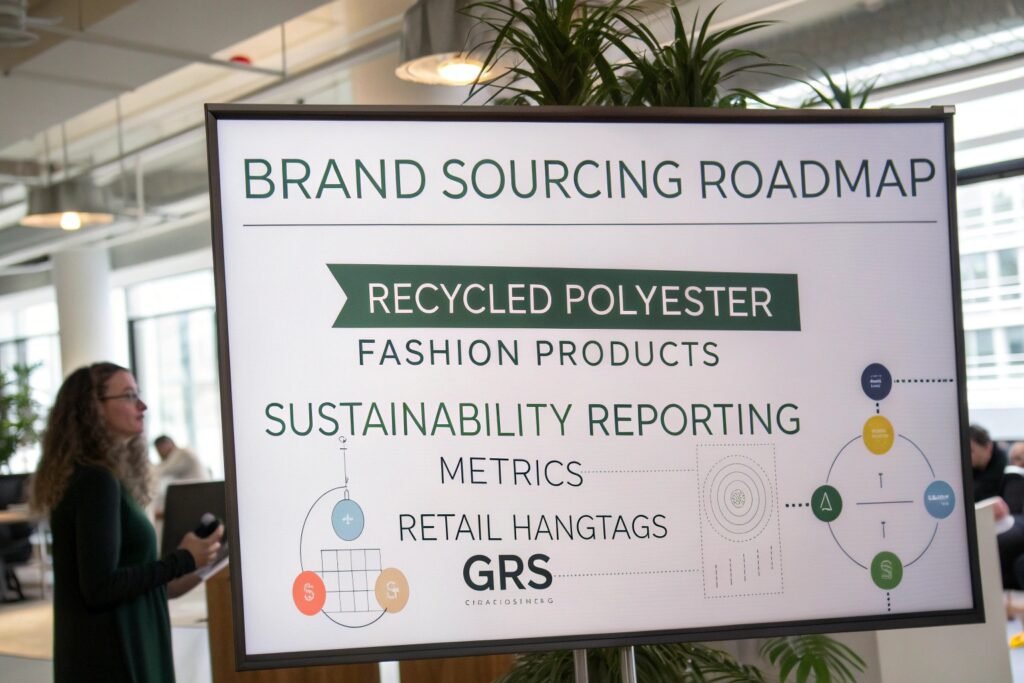
What Are the Branding Benefits?
Using GRS-certified rPET allows you to:
- Display certified hangtags
- Feature traceability stories on packaging
- Comply with retailer eco scorecards (e.g., Zalando, H&M Conscious)
- Qualify for green procurement contracts or tenders
We help clients create co-branded content and recycled journey visuals for marketing use.
How to Maintain Traceability?
We recommend:
- Keeping TCs on file by PO or color batch
- Adding QR or RFID tags for in-store verification
- Requesting audit-ready tracking sheets from suppliers
At Fumao, we back every GRS order with a digital folder including:
- GRS scope cert
- Yarn mill TC
- Internal batch QC report
- Photo proof of production
This helps you pass compliance checks and educate your customers at the same time.
Conclusion
Sourcing GRS-certified recycled polyester is no longer just a niche strategy—it’s a business necessity. From fashion to sportswear to home décor, rPET fabrics offer sustainability, performance, and consumer appeal. But only if they’re traceable and certified. At Fumao Fabric, we help global buyers secure GRS-compliant, high-performance textiles with full documentation and fast delivery. If your brand is ready to meet tomorrow’s eco standards today, let recycled polyester be your first move toward real change.

